by Ray Bodrey | May 4, 2018
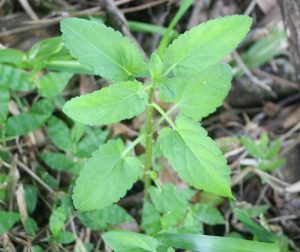
Figure 1: Florida Betony, Stachys floridana. Credit: UF/IFAS Range Cattle Research & Education Center.
If you look closely at your yard, there is a good chance that you will find a plant that, depending on who you ask, is considered either a native wildflower or a weed and there are more than a few species that fit this description. If, upon even closer inspection, you find a plant with root tubers that resemble egg casings or even a rattlesnake’s rattle, you’ve stumbled upon Florida Betony.
Stachys floridana is a perennial broadleaf commonly referred to as rattlesnake weed due to it’s fleshy, white, segmented underground tubers. The plant has an erect stem with leaves that are opposite, shovel-shaped and coarsely serrated. The plant structure is very similar to mint. Flowers, emerging in late spring, are pinkish-purple in color. These inflorescences will also produce fruit, consisting of four nutlets. However, reproduction of the plant and it’s propensity to spread through lawns and gardens primarily occurs through dense root tuber development. Florida Betony’s growing range was originally confined to the state of Florida, but the commercial nursery trade played a major hand in dispersing the plant across the Southeast in the mid-1900’s. It can now be found as far west as Texas and as far north as North Carolina.
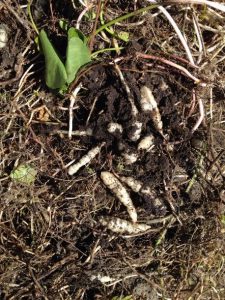
Figure 2: Tubers of the Florida Betony. Credit: Jill Bebee, UF/IFAS Gulf County Master Gardener.It can now be found as far west as Texas and as far north as North Carolina.
This time of year is when Florida Betony thrives. The moderate temperatures of fall and spring are the prime growing periods for Betony. In the heat of the summer, the above-ground structure of the plant will struggle and often disappear completely, only to reemerge in the fall. As a lawn weed, managing tuber development is key to controlling this plant. Applying herbicide to the leaves and stalk may seem at first to have conquered the weed. However, in most cases the tuber will simply regenerate. Glyphosate (Roundup) can be used effectively for control in ornamental plant beds where no turf is present. Be careful when spraying herbicides around trees, shrubs and other desirable plants as any foliar contact will cause phytotoxicity. If you have an infestation of Florida Betony in your turfed areas, there are a few options for control. Regular applications of three way broadleaf herbicides, such as mixtures of 2-4D, Dicamba and Mecoprop, are effective at suppressing this pesky plant. For more information and options, please contact your local county extension office or see the supporting information links below. Always refer to the product label for specific uses, precautions and application rates when using any herbicide.
Supporting information for this article can be found in the following the UF/IFAS EDIS publication, “Florida Betony Biology and Management in Turf” by J. Bryan Unruh, Ramon G. Leon, and Darcy E. P. Telenko: http://edis.ifas.ufl.edu/pdffiles/EP/EP38800.pdf
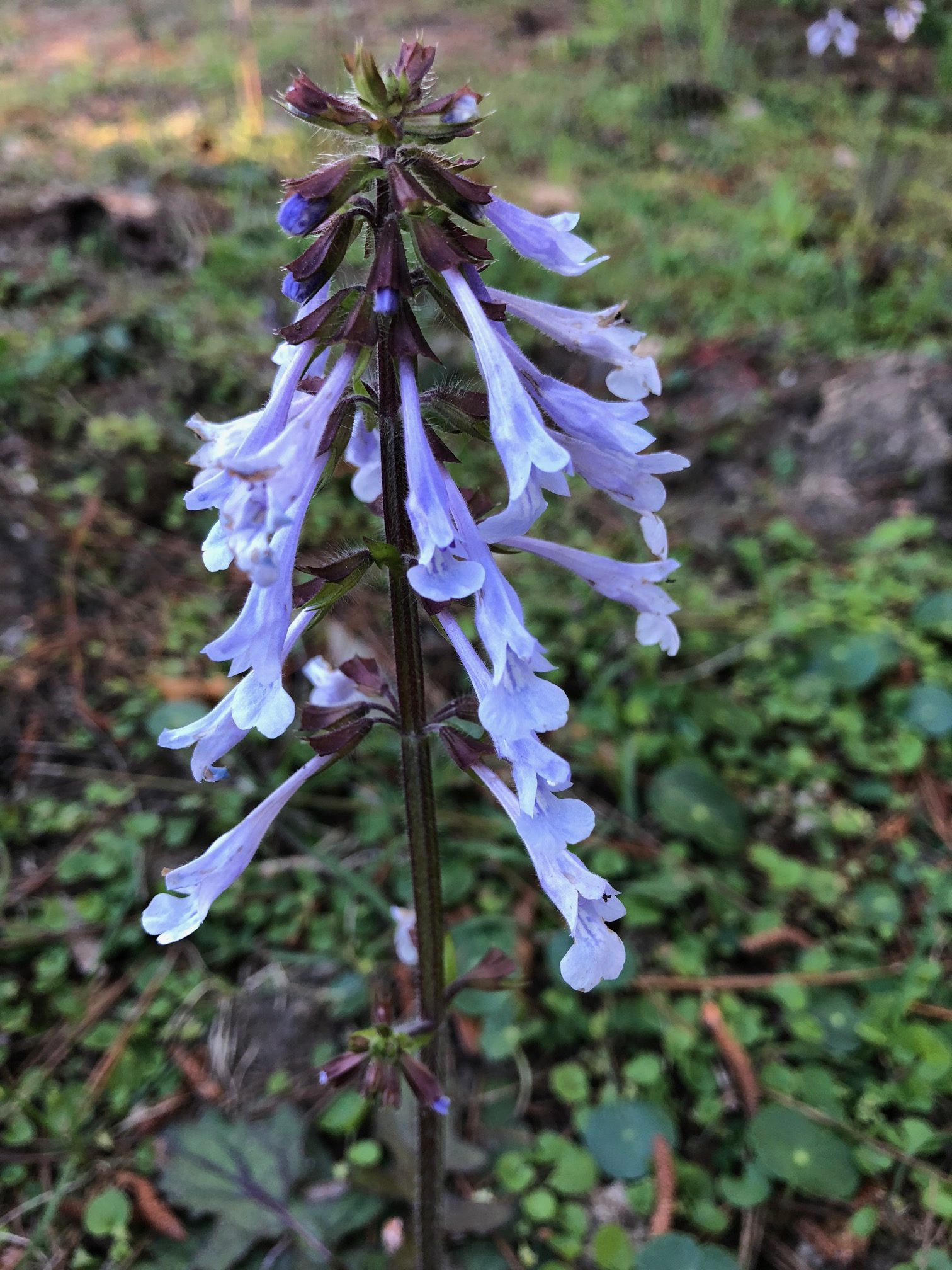
by Mary Salinas | Mar 26, 2018
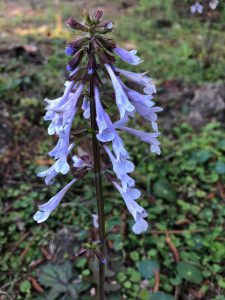
The spike of lavender blooms of lyreleaf sage. Photo credit: Mary Salinas.
Spring wildflowers are popping up along our roadways and along woodland edges. One of our native perennial beauties you can enjoy right now is lyreleaf sage, Salvia lyrata, with spikes of tubular lavender flowers rising about a foot above the ground. The blooms, which occur late winter through late spring, attract bees and butterflies and provide them a good source of nectar. It also is a good host plant for aphids, which in turn, can make it a good banker plant and feeding station for ladybug larvae.
The irregularly-shaped leaves grow in a rosette hugging the ground and can make for a natural ground cover in part shade areas. These attractive leaves are easily identifiable by their purple stems, edges and veins in sharp contrast to the bright green of the rest of the leaf. Lyreleaf sage belongs to the mint family and shares the characteristic square-shaped stems and two-lipped flowers.
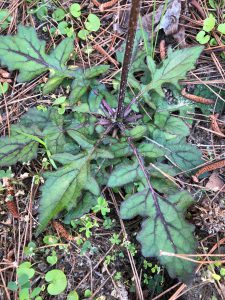
Leaves of lyreleaf sage form a ground hugging rosette. Photo credit: Mary Salinas.
Whatever garden conditions you have, lyreleaf sage should be able to adapt. It tolerates drought, flooding and most soil types. Be aware, though, that this beauty produces lots of seed and can spread quickly. This can be a very desirable trait for establishing a wildflower meadow but challenging if you want to keep it contained in a small area. To manage its’ spread, remove flower spikes after the blooms fade to prevent most seed formation.
Lyreleaf sage can usually be found in native plant or local nurseries; seed can be found through online wildflower seed sources.
For more information:
Planting and Care of Salvias in Landscapes
Florida Wildflower Foundation

by Sheila Dunning | Oct 2, 2017
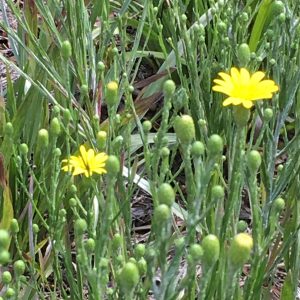
Silkgrass Pityopsis spp. Picture by: Sheila Dunning
Each fall, nature puts on a brilliant show of color throughout the United States. As the temperatures drop, autumn encourages the “leaf peepers” to hit the road in search of the red-, yellow- and orange-colored leaves of the northern deciduous trees.
Here in the Florida Panhandle, fall color means wildflowers. As one drives the roads it’s nearly impossible to not see the bright yellows in the ditches and along the wood’s edge. Golden Asters (Chrysopsis spp.), Tickseeds (Coreopsis spp.), Silkgrasses (Pityopsis spp.), Sunflowers (Helianthus spp.) and Goldenrods (Solidago spp.) are displaying their petals of gold at every turn. These wildflowers are all members of the Aster family, one of the largest plant families in the world. For most, envisioning an Aster means a flower that looks like a daisy. While many are daisy-like in structure, others lack the petals and appear more like cascading sprays.
So if you are one of the many “hitting the road in search of fall color”, head to open areas. For wildflowers, that means rural locations with limited homes and businesses. Forested areas and non-grazed pastures typically have showy displays, especially when a spring burn was performed earlier in the year.
With the drought we experienced, moist, low-lying areas will naturally be the best areas to view the many golden wildflowers. Visit the Florida Wildflower Foundation website, www.flawildflowers.org/bloom.php, to see both what’s in bloom and the locations of the state’s prime viewing areas.
And if you are want to add native wildflowers and other Florida-friendly plants to your landscape join the Master Gardeners for their Fall Plant Sale to be held Saturday, October 14 from 8 am to noon at the Okaloosa County Extension Annex located at 127 SW Hollywood Blvd, Ft. Walton Beach.
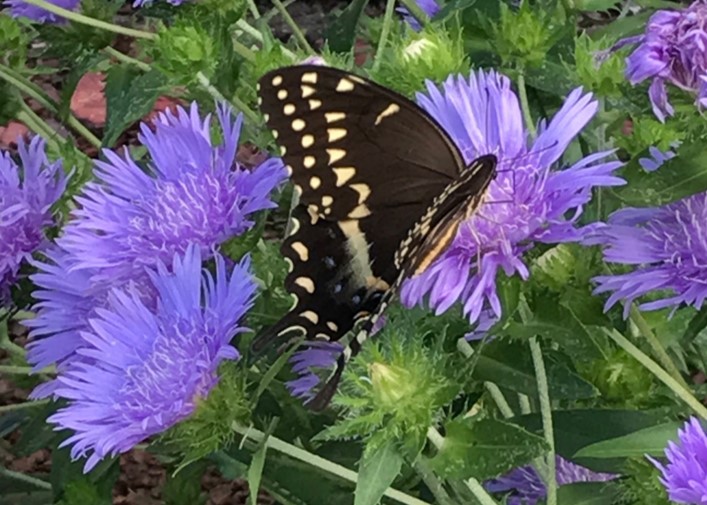
by Mary Salinas | Jun 22, 2017
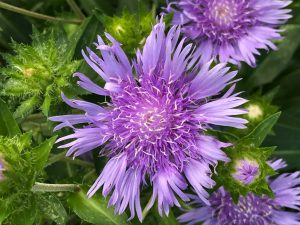
‘Mel’s Blue’ Stokes’ Aster. Photo credit: Mary Derrick, UF/IFAS Extension.
Florida is home to some of the most beautiful flowering perennials. An exceptional one for the panhandle landscape is Stokes’ aster (Stokesia laevis) as it is showy, deer resistant and easy to care for. Unlike other perennials, it generally is evergreen in our region so it provides interest all year.
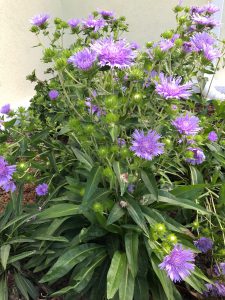
Upright habit and profuse blooming of ‘Mel’s Blue’ Stokes’ Aster. Photo credit: Mary Derrick, UF/IFAS Extension.
The original species of Stokes’ aster has purplish-blue flowers but cultivars have been developed with flowers in shades of white, yellow, rosy-pink and a deep blue. The flowers are large, eye-catching beauties that bloom in spring and summer. They also last well as a cut flower. You will find that bees and butterflies will appreciate their nectar! Remove spent flowers after blooms have faded in order to encourage repeat flowering.
A location in your landscape that provides part sun with well-drained rich soil is best for this perennial. Stokes’ aster is native to moist sites so it does best with regular moisture.
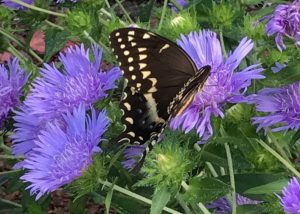
Stokes’ aster attracts butterflies like this black swallowtail. Photo credit: Mary Derrick, UF/IFAS Extension.
As with many perennials, the plant will form a large clump after a few years; this gives you the opportunity to divide the clump in the fall and spread it out in your landscape or share the joy with your gardening buddies.
For more information:
Gardening with Perennials in Florida
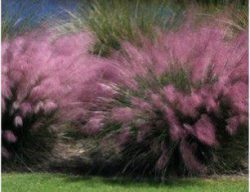
by Carrie Stevenson | Jun 15, 2017

Salt shear and onshore breezes often cause coastal maritime forests to grow at a slant away from the coast. Credit: Florida Master Naturalist Program
People from other parts of the country often move into Florida with expectations of their landscape beyond its capabilities. Those gorgeous peonies that grew up north or the perfect tomatoes they grew in California seem to wither in the heat or succumb to any number of insect or fungal pests. Adapting to our conditions takes listening to those with more experience, changing old habits or varieties and definitely adjusting expectations. Once you understand what the north Florida climate requires, you might be pleasantly surprised with a bumper crop of lemons or a thriving hibiscus that would never have worked in Michigan.
The same idea applies to landscaping on the beach or near areas of saltwater. Particularly on barrier islands like Perdido Key, Santa Rosa Island, and the coastal islands around Apalachicola, the influence of salt spray and hot, dry, sandy soils cannot be underestimated. If you have ever looked closely at the shape of the mature oak trees on the back sides of sand dunes, you’ll notice they’re shorter and tend to lean and grow away from the beach. This is due partially to the onshore breeze that steadily blows off the water, but also due to a phenomenon called salt shear. Salt shear occurs in areas where breaking waves release salt, which evaporates from water droplets and blows into the landscape. Unless specifically adapted to living in a saline environment, the salt can halt growth of the plants receiving the bulk of the spray. Many plants adapt to this by sealing up any vulnerable growing tips and sending energy for growth to the other side, resulting in a sloped shape. Land further inland from the Gulf will have consecutively less salt spray to endure.
Keep in mind that the soil on a barrier island is highly porous; it does not hold water nor nutrients well. The best option is to look at what grows there naturally, and select some of the most attractive and hardy choices for a home or commercial landscape. Knowing that a residence or commercial business is located within these environmental conditions, the best way to ensure success is to work with your surroundings instead of against them.
Below are a handful salt-tolerant options to consider.
Beach sunflower (Helianthus debilis): The yellow-blooming beach or dune sunflower will reseed and spread along as a hardy groundcover.
Muhly grass (Muhlenbergia capillaris): Muhly grass is a native clumping grass commonly used in Florida landscapes. It has showy pinkish-purple blooms in mid-fall.
Beach cordgrass (Spartina patens): Beach cordgrass is a native grass that serves as a sand stabilizer. While not particularly showy, it can serve as a good foundation plant.
Saw palmetto (Serenoa repens): These evergreen shrubs are extraordinarily hearty and long-lived. They produce a fruit that is an important food source for wildlife.
False rosemary (Conradina canescens): This evergreen shrub blooms purple, attracts wildlife, and is a hardy native species.
Firebush (Hamelia patens): Firebush has long-lasting red blooms that attract hummingbirds and native butterflies.
Blanketflower (Gaillardia pulchella): These colorful wildflowers attract pollinators like bees and butterflies and are extremely drought and salt tolerant.
Sunshine mimosa (Mimosa strigillosa): This ground-running plant has colorful, spherical pink blooms and attracts bees. The delicate leaves of the plant are sensitive to touch, and will fold up when touched.
For more information on salt-tolerant coastal plants and trees in our area along with cold-tolerant palms, contact your local Extension agent or Native Plant Society.













